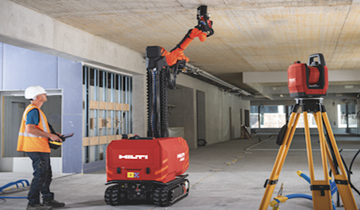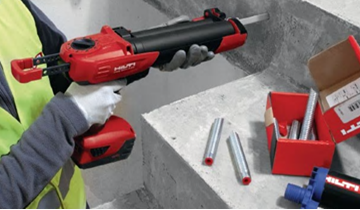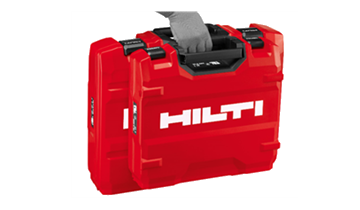TOOLBOX TALKS – 3 CAUSES OF HAVS ON CONSTRUCTION SITES AND HOW TO AVOID THEM
Let’s all make construction sites safer
People working in different roles, face a series of
different hazards.
For example, an office worker is much less at risk
from burns than a chef, but there are a range of common accidents and injuries
which occur across all occupational sectors, and trips and falls invariably top
the league. However, in the construction sector there’s another common injury;
Hand-Arm Vibration Syndrome (HAVS).
The number of hand-arm vibration breaches on construction sites is said to have risen by a third in the last year and is at the forefront of contractor’s minds. Therefore, as health and safety is an topic of ever-growing importance in the industry, we sat down with HSS Hire to highlight the three causes of HAVS on construction sites and how to avoid them.
1) Use of hand-held power
tools or other vibrating equipment for prolonged lengths of time
The HSE advises that employers should carry out a
period of monitoring to understand how long a worker uses specific tools on a
typical day or week.
Once you have gathered data about the task at hand, you can assess what the exposure level is likely to be for that task and whether it is likely to exceed either the Exposure Action (EAV) or Exposure Limit Value (ELV). Once you understand this, focus can shift to taking practical steps to reduce the exposure and the risks.
There are lots of ways in which you can minimise vibration exposure, such as making sure you always use the right tool for each job, reduce the amount of time you use a tool in one go by doing other jobs in between and avoid gripping or forcing a tool more than is necessary.
2) Holding or working with
machinery that vibrates
If you work in the construction industry, you’ll know that sometimes there is no way to avoid using machinery that vibrates, especially when using tools such as concrete breakers, sanders, grinders and hammer drills amongst others. However, it’s important to put some measures in place to prevent extensive hand-arm vibration exposure or reduce any current symptoms.
For example, all employers and workers should check their tools before using them to make sure they have been properly maintained and repaired to avoid increased vibration caused by faults or general wear and tear.
Another option is to use tools with Active Vibration
Reduction Technology (AVR) such as our TE 3000-AVR breaker. Hilti’s AVR
Technology comprises a series of springs and pivots that effectively decouples
the side handles from the operational end of the tool. The vibration in the
direction of the hammer is reduced by a damping mechanism, whilst counter
balancing further reduces the vibrating effects.
The result is a machine which feels much lighter than its power suggests and a tri-axial vibration value that enables Hilti to claim a best-in-class trigger time boosting operator productivity.
3) Ignoring the prospect of
HAVS
Like most things, you can bury your head in the sand for so long, yet without prevention methods, it probably will come to light, and it’s the same with HAVS. That’s why alongside reducing excessive tool usage and machinery with high vibration levels, it’s vital to follow good health practices onsite too.
One example of this is to encourage blood circulation by keeping you and your workers warm and dry, for example by wearing gloves, a hat, waterproofs and using heating pads if available. You could also try giving up or cutting down on smoking because smoking reduces blood flow, or even try massaging and exercising your fingers during work breaks.
In conclusion, overcoming these causes is key to ensuring you have a reliable and robust process for reducing the risks of HAVS as well as increasing your productivity onsite.
more hilti news


